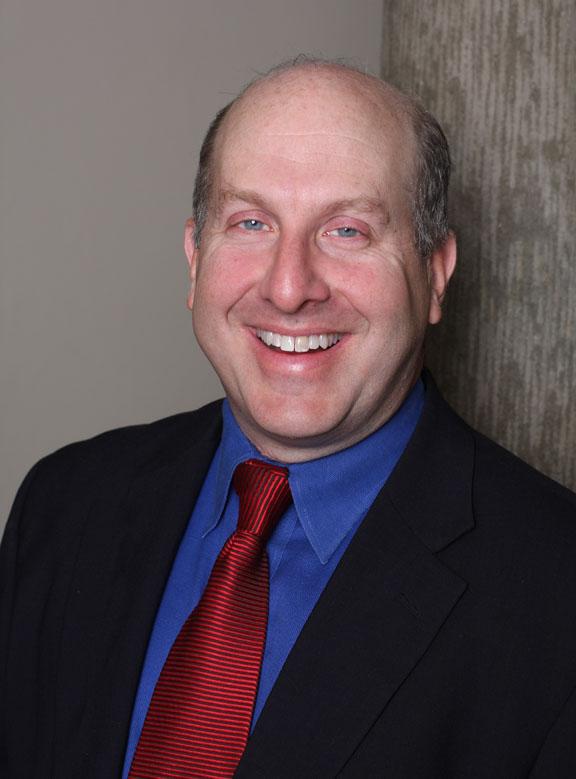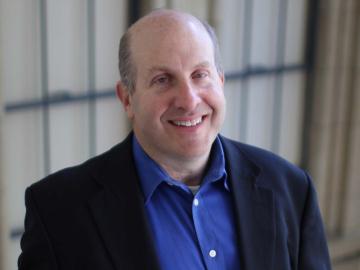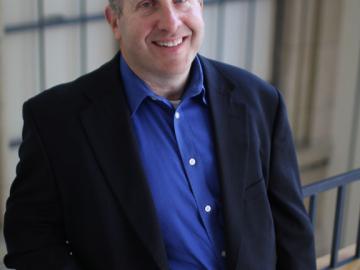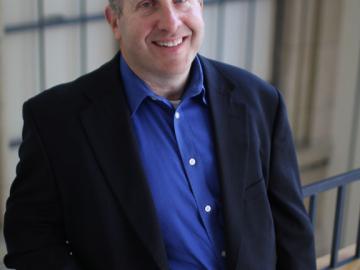Campus News
Building a Brilliant Future
March 20, 2013
Marvin Krislov

The motto of Oberlin —the College of Arts and Sciences and the Conservatory of Music—is “learning and labor.” But given the latest campus news, we might add “cradle of presidents,” since our two top deans are going off to lead other prestigious institutions of higher education.
Congratulations and many, many thanks to Dean of the Conservatory David Stull ’89, who will become president of the San Francisco Conservatory, and to Dean of the College of Arts and Sciences Sean Decatur, the soon-to-be president of Kenyon College. While we are very sorry to lose them, I know both will be outstanding presidents. Their success at Oberlin will also help us attract worthy successors. And they will always be members of the Oberlin family.
Both have made significant contributions to Oberlin. David Stull’s vision, drive, and acumen has elevated the conservatory’s already lofty reputation to new heights. During his 13 years at Oberlin, the past nine as dean, David strengthened the faculty, was a great advocate for the conservatory, and was the driving force behind the creation and construction of the Bertram and Judith Kohl Building, home to our jazz studies program. He secured several major collections, such as the Selch and Neumann collections, and created endowed professorships and scholarships. Other key initiatives included critically acclaimed student ensemble tours of major concert venues in the United States and China, founding the Oberlin Music recording label, and establishing the Creativity & Leadership Project supporting student entrepreneurship. David also created the Thomas and Evon Cooper International Competition.
In his five years at Oberlin, Sean Decatur distinguished himself as a thoughtful, effective leader and a brilliant, analytical thinker. Sean strengthened our faculty, and led efforts to reinforce the rigor of our curricular and co-curricular offerings, resulting in the adoption of a new set of general requirements in the College of Arts and Sciences and an institution-wide course-credit system. He was instrumental in securing funding for initiatives throughout the College of Arts and Sciences. These include a $950,000 grant from the Andrew Mellon Foundation, which established the Oberlin Center for Languages and Cultures, and an $800,000 grant from the Howard Hughes Medical Institute to strengthen teaching and learning of quantitative skills in the natural sciences through course and faculty development and peer-mentoring initiatives focused on deepening student learning of quantitative material.
Update on Diversity, Inclusion, and Response to Bias Incidents
Responding to recent racist, homophobic and anti-Semitic incidents on campus, a coalition of Oberlin College students presented on March 19 written demands to the administration that seek to make the college and conservatory more diverse and inclusive.
The coalition consists of student working groups formed at the Day of Solidarity teach-in on March 4. That day of teaching, discussion, dialogue, and reflection was organized by Oberlin’s Africana studies students and faculty. Student leaders tell me that some 200 students—of different backgrounds, identities, and communities—took part in producing the document.
Many thanks to the students who devoted so much time, energy, and thought to building on our shared commitment to diversity and inclusion at Oberlin. Thanks, too, to the faculty and staff members who offered advice and counsel to the student working groups.
I hope the ideas presented will open up constructive, substantive discussions. And I am very proud that our students and faculty have used the recent incidents to spark teaching and discussion of a wide range of issues relating to diversity and inclusion at Oberlin and in the wider world.
We are carefully studying and considering the students’ demands. I will be able to provide a more detailed response after spring break.
After an initial reading, it is clear that some short-term things can be addressed quickly. Here are some examples of what we are already doing or can begin doing quickly:
• Revising new student orientation including mandatory orientation programs like Many Voices. Discussions of this are already underway, led by the Multicultural Resource Center and the Office of Residential Education. This could begin by the fall of 2013.
• Collaborating with athletics and development to provide a fitness location on south campus by the fall of 2013. This can build on discussions with students from last semester and can start immediately.
• Including discussions of social justice and allyship in multiple sessions of new faculty orientation by the fall of 2013.
• Providing more resources for the Multicultural Resource Center, especially funds for trainings and workshops for the upcoming budget year 2013-14.
• Building a strategic social justice plan for the Division of Student Life.
Addressing issues such as faculty diversity and curricular change will take longer. Increasing faculty diversity is a goal in Oberlin’s strategic plan, and we are already making steady progress with our ongoing comprehensive effort to do so. But it is a long-term effort that includes recruiting, retention, and bringing recent PhDs to campus as postdoctoral fellows through the Consortium for Faculty Diversity at Liberal Arts Colleges. We also now require that all departments consult with Alison Williams, associate dean of academic diversity and director of the Multicultural Resource Center, about their faculty position proposals before submitting them.
Responding to the bias incidents and events leading up to the Day of Solidarity, the college immediately initiated additional security measures to ensure the continued safety of all current and future students. These measures include a significant increase in foot and vehicle patrols by our Safety and Security staff, as well as increased patrols near and on campus by the Oberlin Police Department.
We also launched an investigation into the bias incidents. I can now confirm that our investigation has led to the identification of two students who may be responsible. Both have been removed from campus. We will pursue all appropriate avenues to hold those responsible accountable for their actions. The college is working closely with law enforcement officials, including the FBI, in this matter. Because of federal privacy laws, and the fact that law enforcement investigations, as well as our internal judicial processes are ongoing, we are precluded from saying any more at this time.
The bias incidents are hateful and hurtful. But despite the pain and anguish the incidents caused, the response from our students, faculty, staff, and fellow citizens has highlighted our devotion to Oberlin’s educational mission, as well as the strength and vitality of our community.
The incidents have sparked ongoing and varied teaching, discussions, and actions such as the working groups. I am very proud of the scores of Oberlin students, and the many members of our faculty and staff, who are working to make Oberlin an even more diverse and inclusive place.
This work is hard. But we, as an institution, are committed to doing this work. It reaffirms Oberlin’s long-standing values of inclusion, respect for others, and abiding faith in the worth of every individual. Oberlin’s mission as a liberal arts college and conservatory of music is to achieve—and to enable its students and faculty to achieve—academic, artistic and musical excellence. As our Strategic Plan of 2005 states, “Our excellence encompasses the highest standards for liberal and musical education and diversity, inclusiveness, and social engagement.”
I thank all of you who are working so hard to further our mission, and to honor Oberlin’s great legacy by building a dynamic, diverse, and inclusive present, and a brilliant future for this college and conservatory.
Tags:
You may also like…
Thank you, Oberlin
June 22, 2017
It is hard to believe this will be my final "President’s Desk" column. But in August, I will become president of Pace University in New York. It has been an honor and a privilege to serve as your president.
Remembering Jonathan Demme
May 5, 2017
I’ve been thinking a lot about Oberlin parents and families since I received the sad news last week that Jonathan Demme, the brilliant film director, had passed away. Although Oberlin isn’t his alma mater, Jonathan really came to appreciate the College, Conservatory, and our community. His visits always seemed to energize him, and he became a stalwart supporter of our cinema studies program and the Apollo Outreach Initiative, which offers filmmaking classes to local school kids.
Response to Proposed Federal Budget Cuts
March 31, 2017
The budget proposals being put forward by the Trump administration are deeply troubling in many ways for our society and for American higher education, especially for liberal arts institutions such as Oberlin. The proposed cuts in discretionary spending are contrary to our values of access and inclusion, and our commitment to scientific research, the arts, and the humanities.


